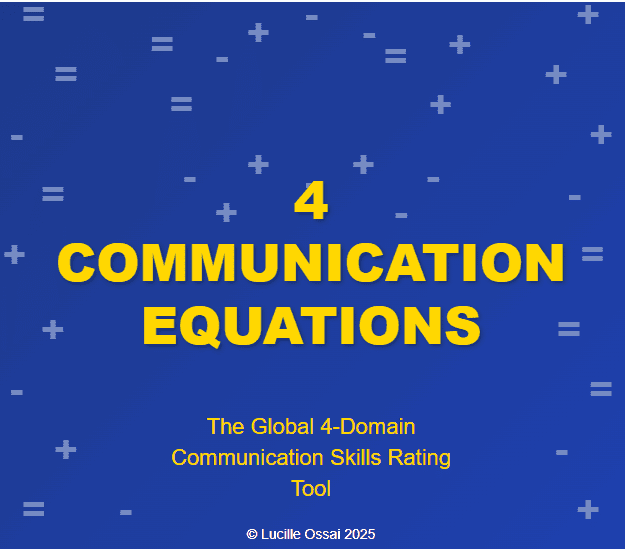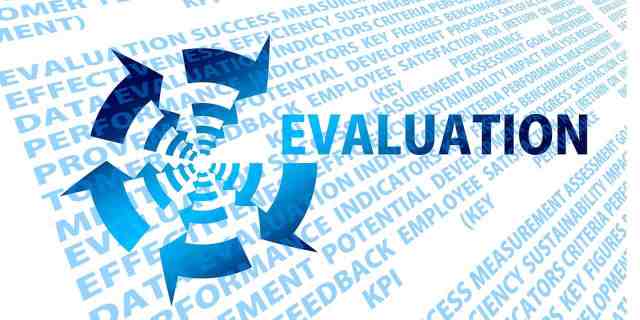
A week ago, I stood before a group of 39 seasoned bank executives comprising zonal leads, including the bank’s managing director in another West African country. Some participants attended the programme in person at the prestigious Lagos Business School, where I worked part-time, while the others logged in virtually.
I was invited to facilitate three communication sessions as part of the senior leadership development programme. Two years prior, I’d delivered similar sessions on leadership communication, persuasion and influence for the same client. However, this time, I revised the content to include more relevant, practical exercises that would challenge participants, given their leadership roles.
And as is the norm with the programmes I design and deliver for professionals, executives, and leaders, I learn something new from each cohort.
As we progressed in the programme, I realised that the participants’ technical brilliance could not be sustained if cracks in their interpersonal relationships and persuasive abilities were not fixed. And after considering the accounts they shared in class, I was again reminded of a critical point:
You cannot fix what you do not know.
Why communication evaluation is not only for professionals
Recent Communication at the Workplace Statistics reveal striking patterns:
- 84% of employees rely on their managers for communication at some point.
- 81% of recruiters consider cross-cultural skills as the top communication ability for job seekers.
- 70% of employers worldwide rank communication as the most critical skill in new hires.
- 25% boost in productivity occurs when teams communicate well.
These figures confirm an inconvenient truth: Ineffective communication stifles growth and weakens business results. Yet, most assessments measure only one or two communication domains, leaving critical blind spots undetected, especially across cultures.
That’s why identifying communication blind spots is the first step to growth — before measuring baselines, and then deciding on the targeted intervention to close gaps.
Such intervention is beneficial not only to professionals, executives, and leaders but also to other groups.
For example, executive recruiters, L&D specialists, and succession planners make strategic decisions to identify the right talent and place them in the relevant functions to support business outcomes. So, they must also make the right choice — or risk wasting funds on ineffective development initiatives.
Global organisations, too, must make the right decisions about the talent to transfer to other regions to ensure business growth.
The Global 4-Domain Communication Skills Rating Tool is the solution. It’s a comprehensive, culturally intelligent assessment that reveals weaknesses across the four most critical domains, helps measure baselines, and tracks growth over time.
The communication equations you shouldn’t ignore
As a professional, executive, or leader, you may have previously undergone some form of communication training or assessment.
As a recruiter/succession planner/global organisation, you may have seen the data on previous communication skills evaluations. But now, you’re unenthusiastic about yet another robust communication evaluation.
However, regardless of your level or function, note the communication equations below that can elevate your results.
1) Professionals at ALL levels

My tech support, prepping the beta system for the Global 4-Domain Communication Skills Rating Tool, recently became concerned. I had outlined how the assessment system would work on the platform.
He heard words like ‘professionals’, ‘leaders’ and ‘cultural intelligence’ and must have imagined a complex system that would not work for early-stage professionals.
‘But what about junior employees?’ He pointed out, almost alarmed.
I smiled before stressing, ‘They’re covered too. All professional levels.’
That question sparked this reminder. The Global 4-Domain Communication Skills Rating Tool matters at each professional level below:
a) Entry-level/early stage — graduate trainees, analysts, associates, team members, etc.
b) Mid-level — supervisors, line managers, project managers, team leads, etc.
c) Senior level — directors, VPs, the C-suite, board members, regional/global leads, etc.
And what is the communication equation that matters in this group?
The Global 4-Domain Communication Skills Rating Tool + tiered system for three professional levels + development insights = Increased visibility for promotions.
Translation:
The Tool helps you at every level, self-evaluating or assessing others, to transform communication insights into career advancement.
Implications:
Development insights reveal where improvements can be made. As a result, your enhanced communication skills raise your visibility and position you for stretch assignments or promotions.
Remember:
Your communication skills can accelerate your career advancement or mar your progress.
2) Recruiters and L&D specialists

Facilitating the communication programme for those bank executives reinforced a trend I’ve observed:
The #1 talent risk today isn’t technical skills. It’s communication blind spots.
For you in this group:
Realise that the weaknesses you can’t see or the gaps you don’t measure lead to risks that quietly reduce business impact and derail the return on investment on development programmes.
For example, you may place brilliant people in high-stakes roles. On paper, they are perfect, and your decision is logical. But then they plateau because:
- They can’t inspire people to action.
- They can’t persuade across the four critical domains (nonverbal communication and interpersonal skills, public speaking, business writing, and leadership communication and influence).
- They can’t navigate cross-cultural nuances.
Such failures don’t just limit careers. They cost your organisation or clients millions in wasted L&D spend and stalled projects.
But here’s the new equation that changes everything for you:
The Global 4-Domain Communication Skills Rating Tool + diagnostic foundation + development insights sharpened with cultural intelligence = Measurable ROI on talent development.
Translation:
The Tool turns your guesswork on communication skills into critical insights that drive action. Its recommendations, rooted in regional cultural norms, let you track effectiveness and justify the ROI of interventions.
Implications:
Development insights and 360-degree feedback minimise biases. You can deliver interventions more strategically and guide management towards better talent decisions.
Remember:
Enhance business outcomes or support talent development? The Tool helps you achieve both.
3) Succession planners
You’ve been entrusted with the delicate task of selecting suitable candidates for business continuity. Mistakes are not an option. Your critical decisions can either support business outcomes or erode your credibility.
And the communication equation below is critical:
The Global 4-Domain Communication Skills Rating Tool + tailored recommendations + tracking = Confident succession + sustainable growth.
Translation:
The Tool provides you with tailored insights and progress tracking, allowing you to confidently place professionals in the leadership pipeline and ensure smooth transitions.
Implications:
You spot leadership readiness with confidence. You can then complement succession plans with data to recommend candidates who pair technical expertise with strong communication skills across all four domains.
Remember:
Enjoy peace of mind while fulfilling your mandate.
4) Global organisations

You know what’s at stake. Your staff diversity is your strength, and your workforce is spread across regions. So, you require a framework that enables you to make informed decisions about talent transfer for international assignments.
In this post-pandemic era, ineffective communication skills erode collaboration, cause mistrust, and limit business results, especially when communication styles clash with local norms.
Therefore, this is the equation you need to get right:
The Global 4-Domain Communication Skills Rating Tool + cultural intelligence = Effectiveness – serious cultural missteps – reputational risks.
Translation:
The Tool’s built-in cultural intelligence equips bright talent with regional insights, helping them lead effectively while avoiding costly cultural missteps and reputational risks across borders.
Implications:
Leadership communication errors abroad can trigger backlash, regulatory penalties (such as heavy fines, stripped tax breaks, and revoked preferred bidder status for public tenders), or diplomatic strain. You mitigate these problems by assessing and tracking candidates’ communication and influencing skills. Targeted intervention programmes and follow-up evaluations then ensure leaders are ready for international assignments.
Remember:
Future-proof your organisation from reputational risks that arise from ineffective communication and serious cultural mishaps.
Conclusion

So, whether you’re a professional, recruiter/L&D specialist, succession planner or the top brass of a global organisation, don’t underestimate the Global 4-Domain Communication Skills Rating with its unique built-in cultural intelligence. Use it strategically to complement your existing systems/programmes.
Effective communication gives you the (unfair) advantage to advance your career, improve business results or position your organisation as an industry leader.
And just as the bank executives in my communication programme learned, don’t settle for communication mediocrity that stalls progress.
Take action today to improve your skills because you cannot wish your communication problems away.
Note:
The Global 4-Domain Communication Skills Rating is approaching beta. After 30 September 2025, it goes dark until the public launch.
In the meantime, please email Lucille@LucilleOssai.com if you’d like me to speak at your event or design and deliver communication coaching and training programmes for your organisation.
———————————————————–
N.B: First and fourth images are courtesy of Lucille Ossai. Second image is courtesy of Pete Linforth via Pixabay. Third and fifth images are courtesy of Gerd Altmann via Pixabay.
